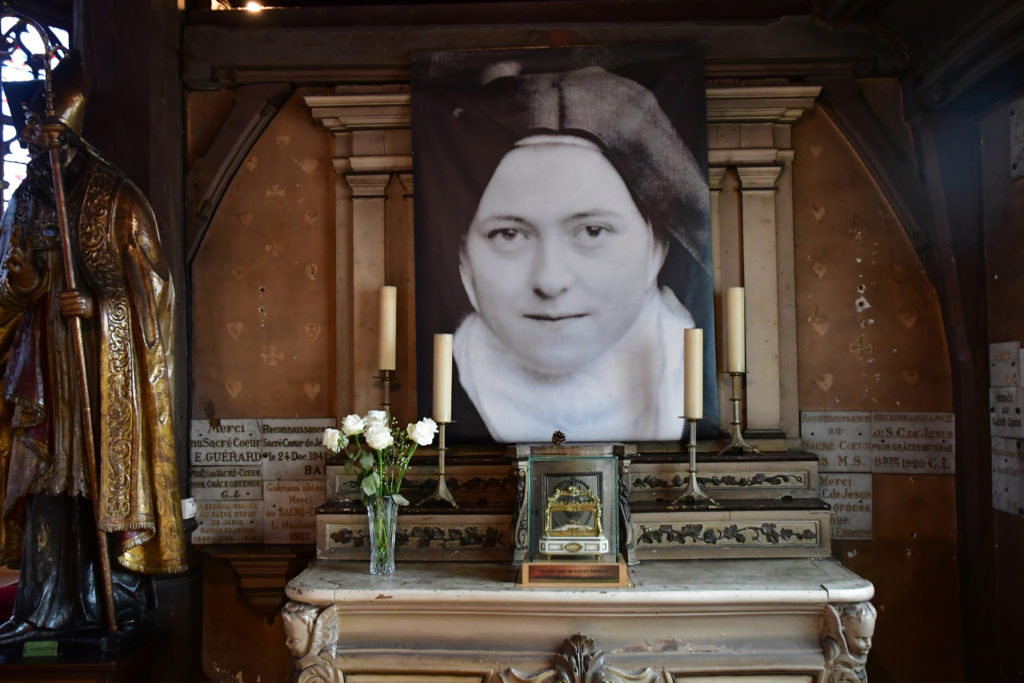Endow (Educating on the Nature and Dignity of Women) is a Catholic organization rooted in the teachings of St. Pope John Paul II.
Among other activities, study guides on Church teachings and notable female saints — Catherine of Siena, Edith Stein, Hildegard — are read aloud by small-group participants and discussed.
Last year I contributed a guide on St. Thérèse of Lisieux (1873-1897), called by many the greatest saint of modern times and recently honored by Pope Francis in the apostolic exhortation “C’est la Confiance” (“It is the Confidence”).
Briefly, Thérèse was a bourgeois French girl, raised in a pious Catholic family, who entered a cloistered Carmelite convent at 15, lived for 9 years in obscurity, and died at 24 of TB.
Here’s an excerpt from a chapter that considers her desire to become a priest.
In 1893, Thérèse was appointed to serve as assistant novice mistress to the convent superior, Mother de Gonzague.
Quickly, she realized that she could not treat each of the novices the same. Each had a different temperament, as well as different strengths, weaknesses, and wounds.
“What cost me more than anything was to observe the faults and slight imperfections and to wage a war to the death on these. I would prefer a thousand times to receive reproofs than to give them to others,” she wrote in her autobiography “The Story of a Soul.”
Nothing escaped her notice. She was severe, but always loving. And if she wasn’t loved herself — “That’s just too bad! I tell the whole truth and if anyone does not want to know the truth, let her not come looking for me. … We should never allow kindness to degenerate into weakness.”
Always she answered to the Father, not to popular acclaim.
Always she was willing to take the last place.
The universal priesthood
Thérèse realized early that, as she diplomatically put it, priests need a lot of help. Praying for their salvation, and for vocations, was one of the main reasons she had entered Carmel.
In the year before her death, she was given two young men upon whom to shower her missionary zeal. She was assigned to correspond with, and to pray for, a newly ordained priest, 26-year-old Father Adolphe Roulland; and Maurice Bellière, 22, a seminarian who was preparing to finish his studies and travel to Africa as a missionary.
Thérèse was ecstatic. A “brother-priest!” and another on his way to the priesthood.
She became a spiritual mother, offering both prayers and counsel, sharing some of her own deepest insights and experiences.
Inculcated with the spirituality of the day, both of her charges were frightened of God’s justice and anguished by their sins. Though they were far better educated than Thérèse, she did not hesitate to share with them her “Little Way” — a kind of shortcut to Jesus that consists in throwing ourselves into his arms like children with utter trust.
To Roulland — three years her senior — she once wrote: “This is Brother, what I think of God’s justice; my way is all confidence and love. I do not understand souls who fear a Friend so tender.”
Only service
Make no mistake: Thérèse herself burned to be a missionary, a martyr, a soldier — and a priest.
“Why must I be a virgin and not an angel or a priest?” she once exclaimed. “Oh! what wonders we shall see in heaven! I have a feeling that those who desired to be priests on earth will be able to share in the honor of the priesthood in heaven.”
At the same time, Thérèse thoroughly understood that the power of the priesthood lies in the responsibility to shepherd, guide, and pastor — not in the title.
In fact, each of us is called to live out our baptismal priesthood: to invite others to discipleship, to accompany, to shepherd and, above all, to sacrifice.
So if we want to be priests — what’s stopping us? Christ has already given the command to go out and spread the Gospel to the whole world. Let’s do so! The world is teeming with those in need of pastoral care. We probably live with some of them.
If we want to be priests, we get to consent to a self-emptying we would never have chosen on our own. We get to consent, like Jesus, to be available to all and to be misunderstood by many. We get to consent to live with results so meager we sometimes wonder whether they are results at all.
Mary, standing steadfast at the foot of the cross, is the ultimate exemplar of Thérèse’s “Little Way.” So if we’re hoping for worldly acclaim, praise, and status, we’re bound to be sorely disappointed. If we’re looking for euphoria, an “experience,” an Instagram moment, we are sure to leave empty-handed.
Because as Thérèse learned all too well in her short 24 years: “There are no raptures, no ecstasies — only service.”
The St. Thérèse of Lisieux study guide is available for purchase on the Endow website.
To learn how to host an entire eight-week study group, visit endowgroups.org or email [email protected] for more information.

